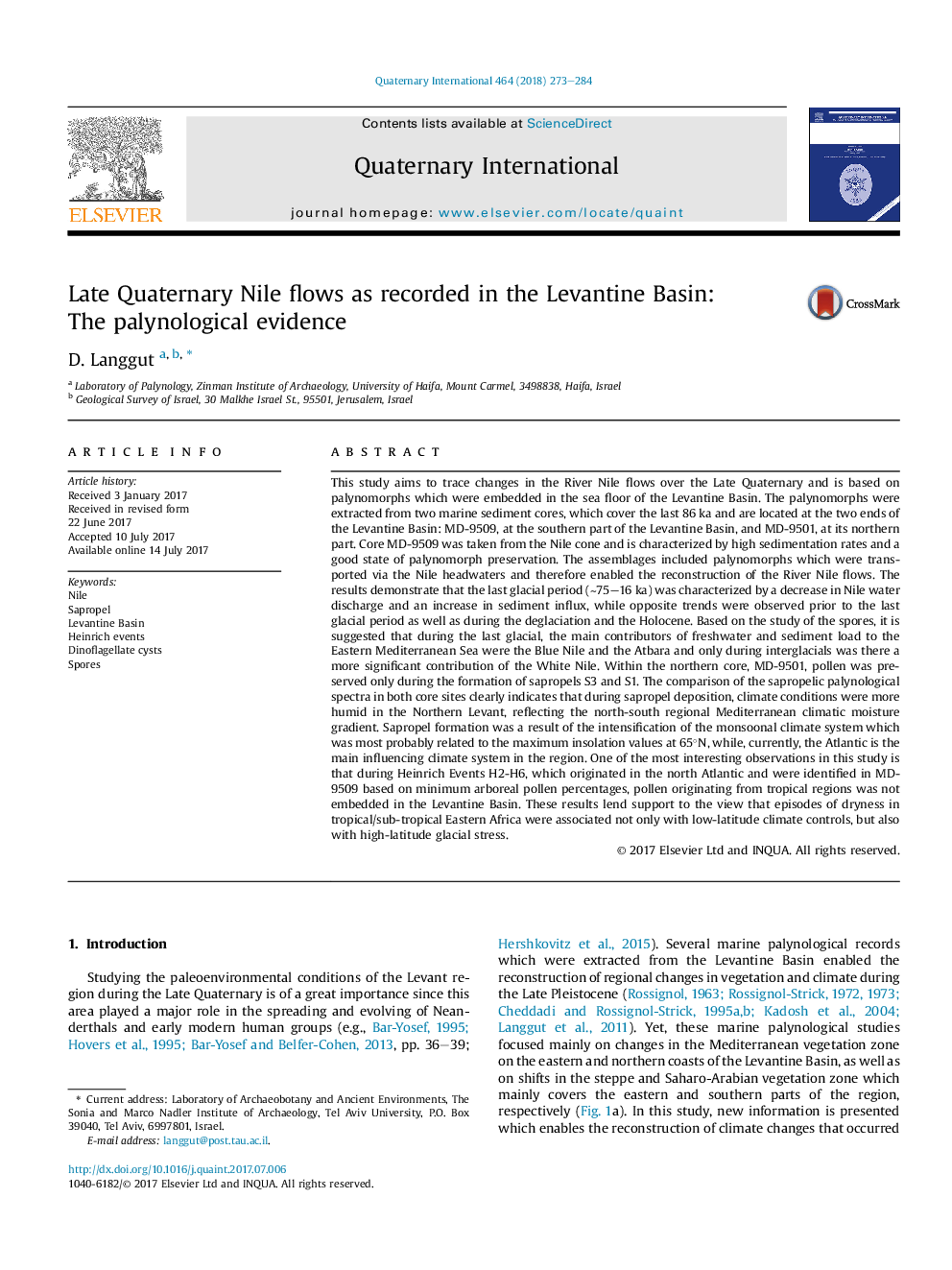| کد مقاله | کد نشریه | سال انتشار | مقاله انگلیسی | نسخه تمام متن |
|---|---|---|---|---|
| 7450978 | 1484058 | 2018 | 12 صفحه PDF | دانلود رایگان |
عنوان انگلیسی مقاله ISI
Late Quaternary Nile flows as recorded in the Levantine Basin: The palynological evidence
دانلود مقاله + سفارش ترجمه
دانلود مقاله ISI انگلیسی
رایگان برای ایرانیان
کلمات کلیدی
موضوعات مرتبط
مهندسی و علوم پایه
علوم زمین و سیارات
زمین شناسی
پیش نمایش صفحه اول مقاله

چکیده انگلیسی
This study aims to trace changes in the River Nile flows over the Late Quaternary and is based on palynomorphs which were embedded in the sea floor of the Levantine Basin. The palynomorphs were extracted from two marine sediment cores, which cover the last 86 ka and are located at the two ends of the Levantine Basin: MD-9509, at the southern part of the Levantine Basin, and MD-9501, at its northern part. Core MD-9509 was taken from the Nile cone and is characterized by high sedimentation rates and a good state of palynomorph preservation. The assemblages included palynomorphs which were transported via the Nile headwaters and therefore enabled the reconstruction of the River Nile flows. The results demonstrate that the last glacial period (â¼75-16 ka) was characterized by a decrease in Nile water discharge and an increase in sediment influx, while opposite trends were observed prior to the last glacial period as well as during the deglaciation and the Holocene. Based on the study of the spores, it is suggested that during the last glacial, the main contributors of freshwater and sediment load to the Eastern Mediterranean Sea were the Blue Nile and the Atbara and only during interglacials was there a more significant contribution of the White Nile. Within the northern core, MD-9501, pollen was preserved only during the formation of sapropels S3 and S1. The comparison of the sapropelic palynological spectra in both core sites clearly indicates that during sapropel deposition, climate conditions were more humid in the Northern Levant, reflecting the north-south regional Mediterranean climatic moisture gradient. Sapropel formation was a result of the intensification of the monsoonal climate system which was most probably related to the maximum insolation values at 65°N, while, currently, the Atlantic is the main influencing climate system in the region. One of the most interesting observations in this study is that during Heinrich Events H2-H6, which originated in the north Atlantic and were identified in MD-9509 based on minimum arboreal pollen percentages, pollen originating from tropical regions was not embedded in the Levantine Basin. These results lend support to the view that episodes of dryness in tropical/sub-tropical Eastern Africa were associated not only with low-latitude climate controls, but also with high-latitude glacial stress.
ناشر
Database: Elsevier - ScienceDirect (ساینس دایرکت)
Journal: Quaternary International - Volume 464, Part A, 10 January 2018, Pages 273-284
Journal: Quaternary International - Volume 464, Part A, 10 January 2018, Pages 273-284
نویسندگان
D. Langgut,